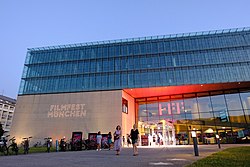 |
|---|
| Film festivals |
The following is a list of festivals dedicated to new media art .
 |
|---|
| Film festivals |
The following is a list of festivals dedicated to new media art .
Egypt
Ethiopia
South Africa
China (mainland)
Discontinued:
Hong Kong
Israel
Indonesia
@mediaartglobale
Japan
Austria
Belgium
Bulgaria
Finland
Discontinued:
France
Germany
Greece
Italy
The Netherlands
Serbia
Spain
Switzerland
Republic of Moldova
United Kingdom
Brazil
Colombia
Canada
United States
Australia
{{cite web}}: CS1 maint: numeric names: authors list (link)